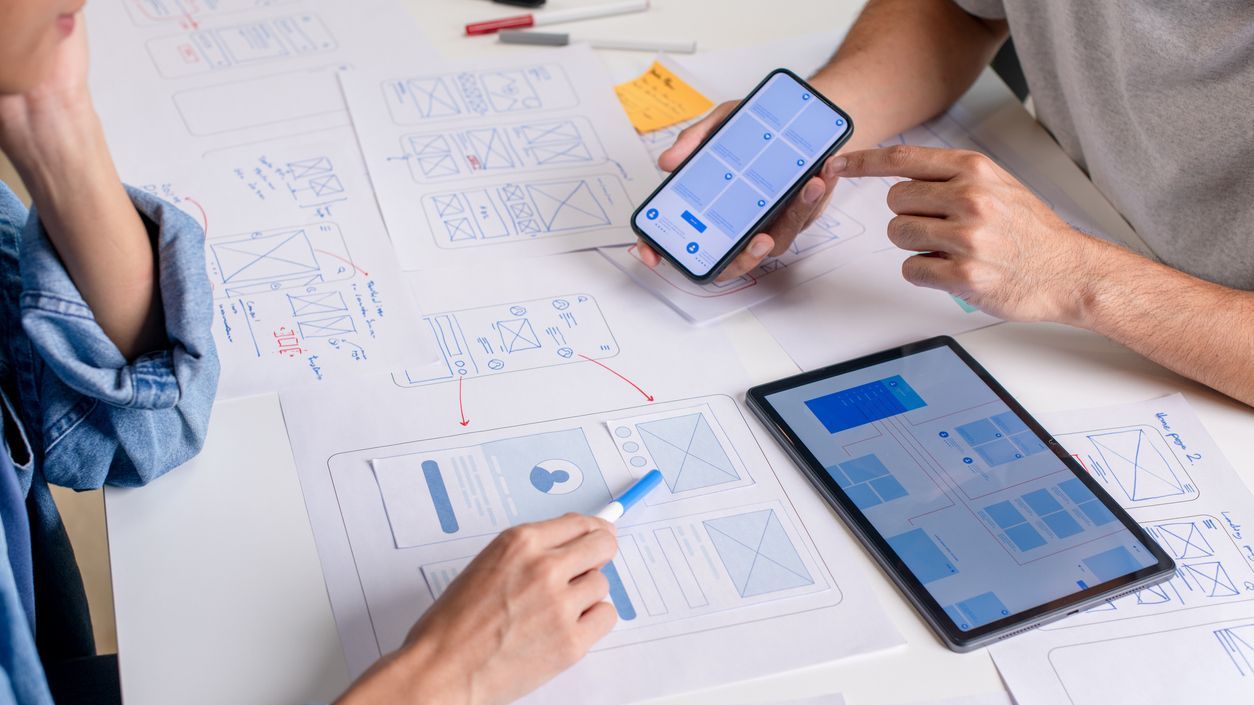In today’s increasingly mobile workforce, effective employee scheduling requires more than just functional software—it demands thoughtfully designed mobile experiences that empower workers to manage their shifts efficiently. Mobile design principles play a crucial role in determining whether employees embrace or resist scheduling technology. The importance of mobile experience in employee scheduling cannot be overstated, as poorly designed interfaces lead to confusion, errors, and ultimately, workplace frustration. The right approach to mobile UX design creates intuitive scheduling tools that enhance productivity, improve work-life balance, and strengthen workplace communication.
Successful mobile UX for employee scheduling strikes a balance between simplicity and functionality, allowing workers to view schedules, request changes, swap shifts, and communicate with managers—all from their personal devices. With Shyft reporting that over 85% of hourly workers prefer using mobile devices for scheduling tasks, organizations can no longer afford to ignore mobile design best practices. This comprehensive guide explores the essential mobile design principles that create effective scheduling experiences for today’s mobile-first workforce across retail, hospitality, healthcare, and other sectors where shift work is prevalent.
The Importance of Mobile-First Design in Employee Scheduling
Mobile-first design represents a fundamental shift in how we approach employee scheduling solutions. Rather than adapting desktop interfaces to smaller screens, this philosophy prioritizes the mobile experience from the beginning of the design process. For scheduling applications, this approach recognizes that many employees—particularly those in retail, hospitality, and healthcare—primarily access their schedules via smartphones. Mobile technology has transformed how employees interact with scheduling systems, creating opportunities for real-time access and immediate responses to scheduling needs.
- Accessibility Anywhere: Mobile-first design ensures employees can check schedules, request time off, or swap shifts regardless of location or time.
- Reduced Administrative Burden: Well-designed mobile interfaces decrease the time managers spend handling scheduling tasks manually.
- Increased Employee Autonomy: User-friendly mobile scheduling empowers employees to manage their own availability and shift preferences.
- Higher Adoption Rates: Intuitive mobile-first designs lead to greater employee engagement with scheduling systems.
- Improved Work-Life Balance: Easy mobile access to schedules helps employees better plan their personal lives around work commitments.
When implementing a mobile employee scheduling system, organizations should evaluate how the interface performs on various devices with different screen sizes. The most successful systems adapt seamlessly across platforms while maintaining essential functionality and visual clarity. Mobile-first doesn’t mean mobile-only—it ensures the experience is optimized for where employees are most likely to engage with scheduling information.
Touch-Friendly Interface Design for Shift Workers
Shift workers often check schedules or request changes while on the go, making touch-friendly design essential for effective mobile scheduling applications. Touch interfaces present unique challenges and opportunities compared to traditional mouse-based interactions. Creating finger-friendly tap targets that accommodate various hand sizes and usage contexts ensures employees can navigate scheduling tools efficiently, even in distracting environments or during brief breaks.
- Appropriate Button Sizing: Touch targets should be at least 44×44 pixels to ensure reliable interaction without accidental taps.
- Generous Spacing: Adequate padding between interactive elements prevents frustrating mis-taps, especially important for scheduling critical actions.
- Intuitive Gestures: Implementing familiar swipe, pinch, and tap gestures for schedule navigation creates natural interactions.
- Contextual Controls: Positioning action buttons where they’re needed (e.g., shift-specific actions appearing with shift details) improves usability.
- Feedback Mechanisms: Visual, haptic, or audio confirmation of actions like confirming a shift swap provides necessary reassurance.
Employee scheduling applications with touch-optimized interface design see significantly higher satisfaction rates and fewer input errors. Creating an interface that accommodates various interaction modes (one-handed use, quick glances, detailed review) ensures the application works effectively in the diverse contexts of shift workers’ lives. This approach is particularly valuable for retail and hospitality workers who may need to check schedules during brief breaks or busy periods.
Navigation Principles for Employee Scheduling Apps
Effective navigation is the backbone of any successful mobile application, particularly for employee scheduling tools where users need quick access to time-sensitive information. The navigation structure should prioritize the most frequent scheduling tasks while maintaining access to less common but important functions. A well-designed navigation system reduces cognitive load and helps employees find what they need without frustration or extensive training.
- Hierarchical Organization: Structuring content from general (monthly schedule) to specific (individual shift details) creates logical information paths.
- Persistent Navigation: Keeping core navigation elements consistently available throughout the app prevents users from feeling lost.
- Search Functionality: Providing powerful search capabilities allows employees to quickly find specific dates or shift information.
- Visual Wayfinding: Using color coding, icons, and visual cues to differentiate between navigation destinations improves orientation.
- Calendar Integration: Seamless toggling between calendar and list views accommodates different preferences for schedule visualization.
Mobile scheduling apps benefit from implementing both bottom navigation (for primary functions) and hamburger menus (for secondary features), balancing immediate access with comprehensive functionality. Thoughtful navigation design pays dividends in user satisfaction and reduced support requests. According to user interaction research, employees cite “finding information quickly” as one of the most important aspects of scheduling app usability, making navigation optimization a priority for effective workforce management tools.
Responsive Design for Various Device Types
Today’s workforce uses a diverse array of devices to access scheduling information, from budget smartphones to high-end tablets. Responsive mobile design ensures scheduling applications deliver a consistent, high-quality experience regardless of screen size, resolution, or device capability. This approach focuses on fluid layouts, flexible images, and adaptable functionality that adjusts intelligently to the available display space and input methods.
- Fluid Grid Systems: Implementing proportional layouts that adjust to different screen dimensions rather than fixed-pixel designs.
- Breakpoint Optimization: Designing specific layout adaptations for common screen size ranges encountered in the workforce.
- Progressive Enhancement: Ensuring core scheduling functions work on all devices while adding enhanced features for more capable devices.
- Touch-to-Mouse Adaptation: Accommodating both touchscreen interactions and traditional cursor controls for schedule manipulation.
- Consistent Functionality: Maintaining feature parity across devices so all employees can perform essential scheduling tasks regardless of their technology.
Organizations implementing mobile scheduling systems report higher employee satisfaction when mobile access is device-agnostic. This inclusivity ensures that all team members, regardless of their personal technology resources, can engage fully with scheduling processes. Companies that offer shift marketplace capabilities find responsive design particularly important, as employees need to quickly view and claim available shifts from whatever device is at hand—particularly important for workers balancing multiple jobs or responsibilities.
Optimizing Load Times and Performance
Performance optimization stands as a critical yet often overlooked aspect of mobile scheduling design. Employees accessing schedules frequently have limited time and patience—they need immediate access to information, especially during shift changes or when checking last-minute updates. Slow-loading applications create frustration and can lead to miscommunication, missed shifts, or scheduling conflicts that impact business operations.
- Image Optimization: Compressing and properly formatting images to minimize data usage while maintaining clarity for schedule visualization.
- Lazy Loading: Implementing techniques that load schedule data progressively as needed rather than all at once.
- Caching Strategies: Storing frequently accessed schedule information locally to reduce server requests and enable offline access.
- API Efficiency: Optimizing backend interactions to retrieve only necessary scheduling data for current views.
- Performance Monitoring: Regularly testing load times across various network conditions to ensure usability in real-world scenarios.
Software performance metrics indicate that scheduling apps need to load critical information within 2-3 seconds to meet user expectations. Applications exceeding this threshold see significantly decreased usage and satisfaction. For organizations with employees working in areas with unreliable connectivity, implementing robust offline capabilities and background synchronization becomes essential for maintaining scheduling coordination. These performance optimizations ensure that mobile scheduling tools remain accessible and useful in the diverse working environments of today’s distributed workforce.
Mobile Accessibility Standards for Inclusive Design
Creating inclusive mobile scheduling applications ensures all employees, regardless of abilities or disabilities, can effectively manage their work schedules. Accessibility isn’t just a legal consideration—it’s a fundamental design principle that improves usability for everyone, especially in high-stress or time-sensitive scheduling scenarios. Following established accessibility guidelines helps organizations create scheduling tools that work for their entire workforce.
- Screen Reader Compatibility: Ensuring all scheduling elements and controls have appropriate labels and descriptions for voice navigation.
- Color Contrast Compliance: Maintaining sufficient contrast between text and backgrounds to ensure schedule information is readable for users with visual impairments.
- Alternative Text: Providing descriptions for all images, icons, and graphical elements used in schedule displays.
- Keyboard Accessibility: Enabling complete navigation and operation of scheduling functions without relying solely on touch gestures.
- Text Resizing: Supporting dynamic text sizing so schedule information remains legible at larger font settings.
Implementing these accessibility standards benefits organizations by increasing workforce inclusion and reducing potential legal issues related to compliance. Healthcare organizations, in particular, find that accessible scheduling tools help accommodate the diverse needs of clinical staff while ensuring clear communication about critical shift coverage. The most effective scheduling applications integrate accessibility from the beginning of the design process rather than retroactively adding accommodations, resulting in more elegant and universally usable solutions.
User Interface Patterns That Work for Scheduling
Effective scheduling interfaces rely on consistent, recognizable UI patterns that align with how employees naturally think about time and work commitments. These patterns create familiar mental models that reduce learning curves and cognitive load when interacting with scheduling information. For shift-based workforces, certain interface elements have proven particularly effective at communicating complex temporal information quickly and clearly.
- Calendar Visualizations: Implementing multiple views (day, week, month) with clear indicators for shifts, time off, and schedule conflicts.
- Color Coding Systems: Using consistent colors to differentiate shift types, positions, or locations for quick visual recognition.
- Status Indicators: Clear visual signals showing confirmation status for requested changes, approvals, or pending actions.
- Timeline Representations: Horizontal time visualizations that help employees understand shift distribution across periods.
- Card-Based Interfaces: Organizing shift information in discrete, manageable units that can be easily manipulated on small screens.
Organizations implementing user interface and experience on mobile applications with these proven patterns report faster employee onboarding and fewer scheduling errors. For businesses with complex scheduling needs, like those in supply chain operations, well-designed interfaces can significantly reduce administrative overhead while improving schedule transparency. The most successful scheduling applications balance visual simplicity with information density, allowing employees to quickly grasp their work commitments without overwhelming details.
Interaction Design for Scheduling Tasks
How employees interact with scheduling applications—the gestures, taps, and inputs used to complete tasks—directly impacts efficiency and satisfaction. Thoughtful interaction design creates intuitive pathways for accomplishing common scheduling actions like requesting time off, swapping shifts, or updating availability. These interactions should feel natural and minimize the steps required to complete essential scheduling functions.
- Gesture-Based Controls: Implementing intuitive swipes and pinch-to-zoom for navigating through schedule periods and details.
- Progressive Disclosure: Revealing scheduling details progressively as needed, preventing information overload on small screens.
- Contextual Actions: Providing relevant options based on the current scheduling context (e.g., different actions for past vs. future shifts).
- Micro-Interactions: Small animated responses that confirm scheduling actions and guide users through multi-step processes.
- Error Prevention: Designing interactions that minimize scheduling mistakes through confirmation dialogues and clear warnings about conflicts.
Well-designed interactions create a sense of control and efficiency that’s particularly important in high-pressure work environments. Team communication features benefit especially from streamlined interaction design, as employees need to quickly coordinate about schedule changes or coverage needs. Organizations implementing scheduling applications with thoughtful mobile application features see higher voluntary adoption rates and greater employee satisfaction with scheduling processes.
Notification Design and Management
Effective notification systems are vital for scheduling applications, creating a balance between keeping employees informed and avoiding notification fatigue. Well-designed alerts ensure critical scheduling information reaches staff promptly while respecting their attention and personal time. For shift workers, properly timed and relevant notifications about schedule changes, shift opportunities, or upcoming commitments can significantly improve work coordination.
- Priority-Based Alerts: Implementing tiered notification systems that distinguish between urgent schedule changes and routine updates.
- Customizable Preferences: Allowing employees to select which scheduling events trigger notifications and through which channels.
- Actionable Notifications: Enabling direct responses to scheduling requests without opening the full application.
- Strategic Timing: Delivering notifications at appropriate times when employees are likely to be receptive, not during off-hours or busy periods.
- Context-Rich Information: Including sufficient details in notifications so employees can make decisions without additional research.
Organizations implementing real-time notifications effectively report improved shift coverage and decreased last-minute scheduling problems. For businesses with dynamic staffing needs, like those in airlines or seasonal retail, well-designed notification systems help maintain operational flexibility while respecting employee work-life boundaries. The most successful scheduling applications treat notification design as a core feature rather than an afterthought, recognizing its crucial role in maintaining scheduling coordination.
Mobile Security Considerations for Scheduling Apps
Security considerations are paramount for mobile scheduling applications that contain sensitive employee information and connect to organizational systems. Effective security measures protect personal data while maintaining the convenience and accessibility that make mobile scheduling valuable. For both employees and organizations, confidence in the security of scheduling tools directly impacts adoption and trust in the system.
- Authentication Options: Implementing secure yet convenient access methods, including biometric login and multi-factor authentication for scheduling access.
- Data Encryption: Ensuring all schedule-related information is encrypted both in transit and at rest on mobile devices.
- Privacy Controls: Providing granular settings that allow employees to control what personal information is visible to colleagues.
- Secure Sessions: Implementing appropriate timeouts and session management to protect schedule data on shared or lost devices.
- Permission Management: Clearly communicating what device permissions the scheduling app requires and why they’re necessary.
Organizations implementing security and privacy on mobile devices find that transparent security practices actually enhance user experience by building trust. For industries with strict privacy regulations, like healthcare, robust security measures are essential for compliance while enabling the flexibility of mobile scheduling. The best scheduling applications integrate security seamlessly into the user experience, providing protection without imposing burdensome procedures that discourage regular use.
Conclusion: Implementing Effective Mobile Design for Scheduling Success
Effective mobile design for employee scheduling represents a significant opportunity for organizations to improve workforce management while enhancing employee satisfaction. The principles outlined in this guide—from mobile-first approaches and touch-friendly interfaces to performance optimization and security considerations—create the foundation for scheduling tools that truly serve the needs of today’s mobile workforce. By implementing these design practices, organizations can transform scheduling from a mundane administrative task into a seamless experience that supports operational excellence and work-life balance.
As mobile technologies continue to evolve, scheduling applications will need to adapt to emerging capabilities and changing workforce expectations. Organizations that prioritize mobile UX design in their scheduling tools position themselves for greater agility, improved employee retention, and more efficient operations. Whether implemented through platforms like Shyft or developed as custom solutions, mobile-optimized scheduling represents an essential investment in workplace effectiveness and employee satisfaction for forward-thinking organizations in retail, hospitality, healthcare, and beyond.
FAQ
1. How does mobile design impact employee engagement with scheduling apps?
Thoughtful mobile design directly influences how frequently and effectively employees engage with scheduling applications. Well-designed mobile interfaces reduce friction in schedule checking, shift swapping, and availability updates—increasing voluntary adoption rates by 60-80% compared to poorly designed alternatives. When employees can easily interact with scheduling tools, they’re more likely to maintain accurate availability information, respond quickly to open shifts, and proactively manage their work commitments. This engagement creates a positive feedback loop, improving scheduling accuracy and reducing administrative overhead for managers.
2. What are the most essential mobile UX features for employee scheduling?
The most critical UX features for mobile scheduling applications include: intuitive calendar visualizations that clearly display shifts and availability; streamlined shift-swapping capabilities that facilitate peer-to-peer schedule adjustments; proactive notifications that alert employees to schedule changes or opportunities; offline functionality that allows schedule access without constant connectivity; and one-tap actions for common tasks like confirming shifts or requesting time off. These features address the core scheduling needs of mobile employees, particularly those working variable shifts in dynamic environments like retail, hospitality, and healthcare.
3. How can scheduling apps be optimized for different mobile devices?
Optimizing scheduling apps across diverse mobile devices requires a multi-faceted approach: implementing responsive design that adapts layouts to different screen sizes; creating adaptive interfaces that adjust functionality based on device capabilities; testing thoroughly across various operating systems and device types commonly used by your workforce; offering device-specific features that leverage unique capabilities (such as biometric authentication on supported devices); and maintaining a consistent core experience that ensures all employees can accomplish essential scheduling tasks regardless of their technology. This device-agnostic approach ensures equitable access to scheduling information across your entire workforce.
4. What accessibility considerations should be included in mobile scheduling design?
Accessible mobile scheduling designs should incorporate: proper semantic structure that works with screen readers and assistive technologies; sufficient color contrast for shift codes and calendar elements; touch targets large enough to accommodate users with motor impairments; alternative text for all visual scheduling elements; keyboard-equivalent operations for all touch gestures; and support for system-level accessibility features like text scaling and voice control. These accommodations ensure scheduling tools work for all employees, including those with visual, auditory, motor, or cognitive disabilities, creating an inclusive workplace environment.
5. How do mobile design principles affect scheduling efficiency?
Well-implemented mobile design principles dramatically improve scheduling efficiency by: reducing the time employees spend interpreting and managing their schedules; minimizing errors and miscommunications through clear visual design; accelerating administrative processes like shift swaps and availability updates; decreasing manager intervention through intuitive self-service workflows; and promoting better coordination through real-time schedule visibility and notifications. Organizations that invest in quality mobile scheduling design typically report 25-40% reductions in schedule-related administrative time and significant decreases in missed shifts and scheduling conflicts.












